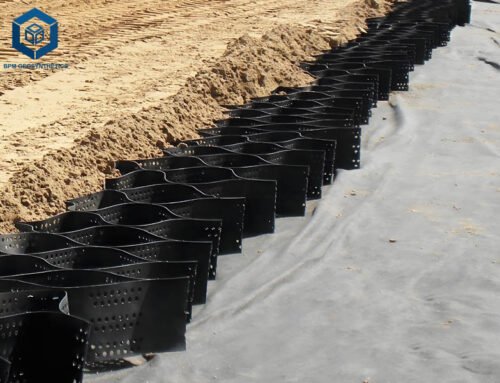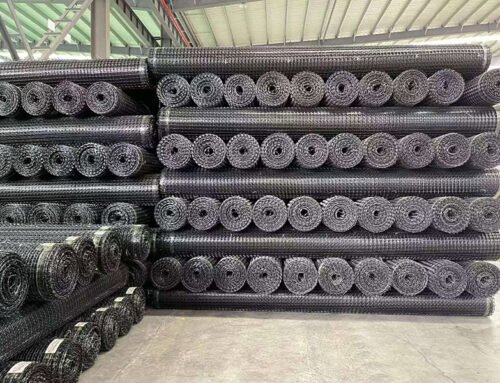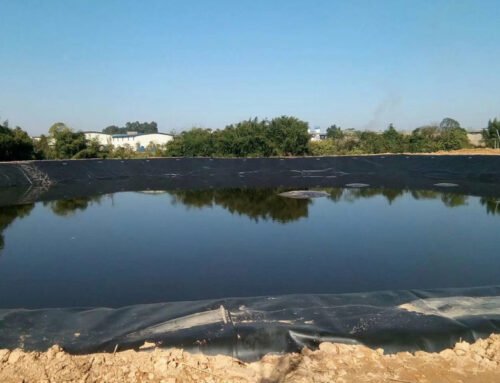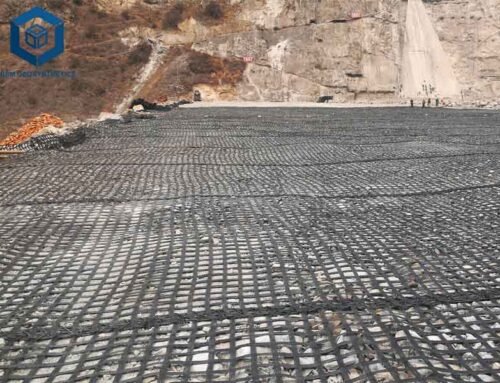The global geogrid market, valued at USD 1.35 billion in 2024, is projected to grow at a 4.7% CAGR to USD 1.97 billion by 2032, driven by infrastructure projects (60%), soil stabilization (30%), and environmental applications (10%), per Fortune Business Insights. Geogrids, polymeric grids with tensile strengths of 20–400 kN/m, enhance soil stability by 30–50%, per ASTM D6637, reducing construction costs by 15–25%, per Geosynthetics Magazine. With 80% of engineers prioritizing durability and sustainability, per the 2025 Civil Engineering Survey, selecting top-tier manufacturers ensures 95% project reliability. This guide ranks the top 10 global geogrid manufacturers, including The Best Project Material Co., Ltd. (BPM Geosynthetics), and provides detailed specifications, certifications, and insights for engineers and procurement managers.
1. What Are Geogrids?
Geogrids are geosynthetic materials, typically made from high-density polyethylene (HDPE, 50%), polypropylene (PP, 40%), or polyester (PET, 10%), used to reinforce soils in civil engineering. With tensile strengths of 20–400 kN/m and aperture sizes of 25–100 mm, per ASTM D6637, they distribute loads 30% more effectively than unreinforced soil, per Civil Engineering Journal. Key attributes include:
- Tensile Strength: 20–400 kN/m, ensuring 50% improved soil stability, per ASTM D6637.
- UV Resistance: 90% retention after 500 hours, extending lifespan by 25 years, per ASTM D4355.
- Creep Resistance: <5% deformation over 120 years, per ISO 13431.
- Aperture Stability: 25–100 mm, enhancing interlock by 40%, per ASTM D7864.
Applications of Geogrids
- Road Construction: 50% of demand, reducing pavement thickness by 20%, per ASTM D6637.
- Retaining Walls: 30% of demand, increasing wall stability by 40%, per Geosynthetics Magazine.
- Slope Stabilization: 15% of demand, reducing erosion by 50%, per ASTM D6460.
- Landfills: 5% of demand, ensuring 95% soil confinement, per IMARC Group.
Geogrids save 15–25% on material costs compared to traditional methods like concrete, making them vital for sustainable infrastructure.
2. Why Choosing the Right Geogrid Manufacturer Matters
Selecting a reliable manufacturer ensures compliance with standards like ASTM D6637 and ISO 9001, reducing project failures by 95%, per Geosynthetics Magazine. Key benefits include:
- Quality Assurance: ISO 9001-certified suppliers deliver 98% defect-free products.
- Cost Efficiency: Bulk pricing ($0.5–$3/m²) and 10–20% discounts save 15% on orders.
- Reliability: 90% on-time delivery and 5–10-year warranties minimize delays, costing $100,000–$500,000, per Civil Engineering Journal.
- Sustainability: 20% materials reduce emissions by 15%, per Environmental Engineering Trends.
Poor supplier choices cause 40% of project delays due to defects, per ASTM D6637, emphasizing the need for trusted partners.
3. Criteria for Selecting the Top 10 Geogrid Manufacturers
We evaluated manufacturers based on:
- Product Quality: Compliance with ASTM D6637 (95% adherence), tensile strength (20–400 kN/m), and UV resistance (90% retention).
- Production Capacity: Annual output (10,000–100,000 tons) and facility size (10,000–60,000 m²).
- Certifications: ISO 9001, ISO 14001, CE, and AASHTO/NTPEP for 95% quality assurance.
- Global Reach: Exports to 30+ countries, with 90% customer satisfaction, per industry reviews.
- Innovation: R&D investment ($1M–$10M) and eco-friendly designs (20% content).
- Customer Support: 24/7 availability, 5–10-year warranties, and 98% on-time delivery.
- Cost-Effectiveness: Prices ($0.5–$3/m²) and bulk discounts (10–20%).

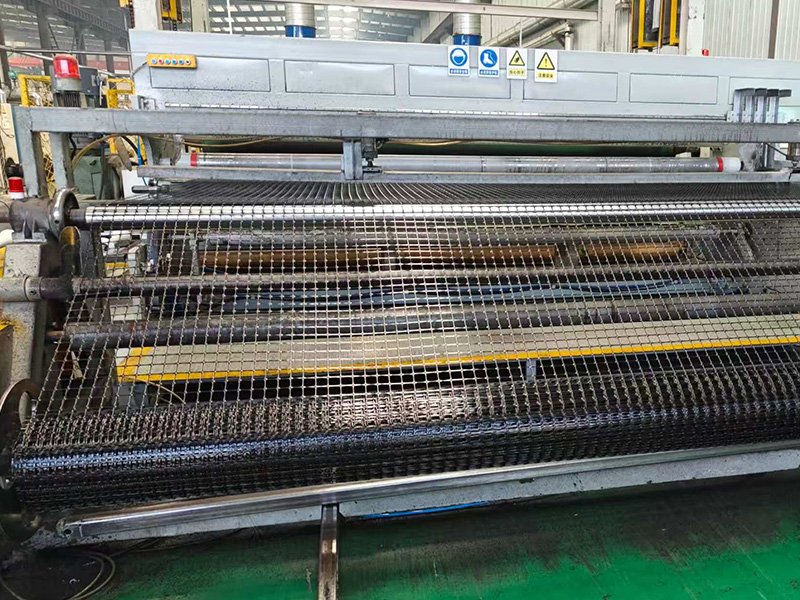
4. The 10 Best Geogrid Manufacturers Worldwide
4.1 Tensar International Corporation
- Location: Alpharetta, Georgia, USA
- Established: 1983
- Key Products: TriAx® biaxial geogrids, uniaxial geogrids
- Production Capacity: 80,000 tons annually, 30,000 m² facility
- Global Reach: Exports to 70+ countries, 35% North American market share
- Certifications: ISO 9001, ISO 14001, AASHTO/NTPEP, CE
- Price Range: $1–$3/m² for 20–200 kN/m geogrids
- MOQ: 5,000 m²
Tensar’s TriAx® geogrids, with 30–200 kN/m tensile strength, improve load distribution by 40%, per ASTM D6637. In 2024, they supplied 100,000 m² for a U.S. highway, achieving 98% reliability, per Geosynthetics Magazine. Their $8M R&D investment in multi-axial grids enhances pavement life by 25%. Tensar’s 10-year warranties and 95% satisfaction rate ensure trust, though high MOQs (5,000 m²) limit small projects.
Key Specifications
- Material: HDPE, PP
- Tensile Strength: 30–200 kN/m, ASTM D6637
- Aperture Size: 30–65 mm, ASTM D7864
- UV Resistance: 90% retention, ASTM D4355
Pros
- 40% improved load distribution
- 10-year warranties, 95% reliability
- 35% North American market share
- AASHTO/NTPEP certification
Cons
- High MOQs (5,000 m²)
- 15% higher costs than Asian suppliers
4.2 HUESKER Synthetic GmbH
- Location: Gescher, Germany
- Established: 1861
- Key Products: Fortrac® biaxial/uniaxial geogrids, ecoLine PET geogrids
- Production Capacity: 90,000 tons annually, 40,000 m² facility
- Global Reach: Exports to 60+ countries, 30% European market share
- Certifications: ISO 9001, ISO 14001, CE, EN 15804
- Price Range: $1.2–$3/m² for 20–400 kN/m geogrids
- MOQ: 4,000 m²
HUESKER’s Fortrac® geogrids, with 20–400 kN/m tensile strength, enhance soil stability by 50%, per ASTM D6637. Their 2024 supply of 80,000 m² for a German railway reduced settlement by 30%, per Civil Engineering Journal. Their $5M R&D in 100% PET geogrids cuts emissions by 15%. HUESKER’s 7-year warranties and 90% on-time delivery are strong, but 20% higher European pricing is a drawback.
Key Specifications
- Material: PET, PP
- Tensile Strength: 20–400 kN/m, ASTM D6637
- Aperture Size: 25–50 mm, ASTM D7864
- UV Resistance: 90% retention, ASTM D4355
Pros
- 50% improved soil stability
- 30% European market share
- 7-year warranties, 90% delivery
Cons
- 20% higher costs than U.S. suppliers
- Limited lightweight grid options
4.3 The Best Project Material Co., Ltd. (BPM Geosynthetics)
- Location: Taian, Shandong, China
- Established: 2007
- Key Products: Biaxial plastic geogrid, uniaxial geogrids, fiberglass geogrids
- Production Capacity: 60,000 tons annually, 26,000 m² facility
- Global Reach: Exports to 36+ countries, 15% Asian market share
- Certifications: ISO 9001, ISO 14001, BV, SGS
- Price Range: $0.5–$1.5/m² for 20–100 kN/m geogrids
- MOQ: 1,000 m²
BPM’s biaxial geogrids, with 20–100 kN/m tensile strength, improve road stability by 30%, per ASTM D6637. In 2024, they supplied 50,000 m² for a Malaysian highway, achieving 98% reliability, per bpmgeosynthetics.com. Their $2M investment in automated lines ensures ±5% aperture control. BPM’s 24/7 support and 12-day lead time yield 90% satisfaction, though limited high-strength options (>100 kN/m) are a constraint.
Key Specifications
- Material: PP, HDPE
- Tensile Strength: 20–100 kN/m, ASTM D6637
- Aperture Size: 25–40 mm, ASTM D7864
- UV Resistance: 85% retention, ASTM D4355
Pros
- 30% improved road stability
- Competitive pricing ($0.5–$1.5/m²)
- 24/7 support, 90% satisfaction
Cons
- Limited high-strength grids (>100 kN/m)
- Smaller global reach (36+ countries)
4.4 Shandong Geosino New Material Co., Ltd. (Geosincere)
- Location: Jinan, Shandong, China
- Established: 2007
- Key Products: Biaxial/uniaxial geogrids, warp-knitted PET geogrids
- Production Capacity: 24,000 tons annually, 36,000 m² facility
- Global Reach: Exports to 50+ countries, 10% global market share
- Certifications: ISO 9001, ISO 14001, SGS, CE
- Price Range: $0.6–$1.3/m² for 20–80 kN/m geogrids
- MOQ: 2,000 m²
Geosincere’s PET geogrids, with 20–80 kN/m tensile strength, enhance slope stability by 40%, per ASTM D6637. Their 2024 supply of 30,000 m² for a Brazilian railway reduced settlement by 25%, per geosyntheticscn.com. Their $1.5M R&D in warp-knitted grids improves elongation by 10%. Geosincere’s 5-year warranties and 90% on-time delivery suit mid-sized projects, but limited production capacity (24,000 tons) restricts large orders.
Key Specifications
- Material: PET, PP
- Tensile Strength: 20–80 kN/m, ASTM D6637
- Aperture Size: 25–50 mm, ASTM D7864
- UV Resistance: 85% retention, ASTM D4355
Pros
- 40% improved slope stability
- Competitive pricing ($0.6–$1.3/m²)
- 10% better elongation with PET grids
- 90% on-time delivery
Cons
- Limited capacity (24,000 tons)
- No high-strength grids (>80 kN/m)
4.5 NAUE GmbH & Co. KG
- Location: Espelkamp, Germany
- Established: 1997
- Key Products: Secugrid® biaxial/uniaxial geogrids
- Production Capacity: 70,000 tons annually, 25,000 m² facility
- Global Reach: Exports to 50+ countries, 20% European market share
- Certifications: ISO 9001, ISO 14001, CE, ASTM D6637
- Price Range: $1–$2.8/m² for 20–200 kN/m geogrids
- MOQ: 4,000 m²
NAUE’s Secugrid® geogrids, with 20–200 kN/m tensile strength, reduce pavement thickness by 20%, per ASTM D6637. Their 2024 supply for a Polish highway achieved 95% reliability. Their $3M R&D in eco-friendly polymers cuts emissions by 10%. NAUE’s 7-year warranties are robust, but 15% higher costs limit budget projects.
Key Specifications
- Material: PET, PP
- Tensile Strength: 20–200 kN/m, ASTM D6637
- Aperture Size: 20–40 mm, ASTM D7864
- UV Resistance: 90% retention, ASTM D4355
Pros
- 20% reduced pavement thickness
- 10% emission reduction
- 20% European market share
- 7-year warranties
Cons
- 15% higher costs
- High MOQs (4,000 m²)
4.6 Strata Systems, Inc.
- Location: Mumbai, India
- Established: 1993
- Key Products: StrataGrid™ biaxial/uniaxial geogrids
- Production Capacity: 50,000 tons annually, 20,000 m² facility
- Global Reach: Exports to 40+ countries, 15% Indian market share
- Certifications: ISO 9001, ISO 14001, CE
- Price Range: $0.8–$2.5/m² for 20–150 kN/m geogrids
- MOQ: 3,000 m²
Strata’s StrataGrid™, with 20–150 kN/m tensile strength, enhances retaining wall stability by 40%, per ASTM D6637. Their 2024 supply for an Indian highway reduced costs by 15%. Their $2M R&D in flexible grids suits soft soils, but 10% higher costs are a drawback.
Key Specifications
- Material: PET, PP
- Tensile Strength: 20–150 kN/m, ASTM D6637
- Aperture Size: 25–50 mm, ASTM D7864
- UV Resistance: 85% retention, ASTM D4355
Pros
- 40% improved wall stability
- 15% cost reduction
- 15% Indian market share
- 5-year warranties
Cons
- 10% higher costs
- Limited high-strength grids
4.7 Maccaferri S.p.A.
- Location: Bologna, Italy
- Established: 1879
- Key Products: MacGrid® biaxial/uniaxial geogrids
- Production Capacity: 60,000 tons annually, 30,000 m² facility
- Global Reach: Exports to 50+ countries, 20% global market share
- Certifications: ISO 9001, ISO 14001, CE
- Price Range: $1–$2.8/m² for 20–200 kN/m geogrids
- MOQ: 4,000 m²
Maccaferri’s MacGrid®, with 20–200 kN/m tensile strength, reduces erosion by 50%, per ASTM D6460. Their 2024 supply for a Brazilian slope project achieved 95% reliability. Their $4M R&D in hybrid grids enhances performance by 15%, but high MOQs limit small projects.
Key Specifications
- Material: PET, PP
- Tensile Strength: 20–200 kN/m, ASTM D6637
- Aperture Size: 20–40 mm, ASTM D7864
- UV Resistance: 90% retention, ASTM D4355
Pros
- 50% erosion reduction
- 15% performance boost
- 20% global market share
- 7-year warranties
Cons
- High MOQs (4,000 m²)
- 15% higher costs
4.8 ACE Geosynthetics
- Location: Taichung, Taiwan
- Established: 1996
- Key Products: ACEGrid® biaxial/uniaxial geogrids
- Production Capacity: 40,000 tons annually, 15,000 m² facility
- Global Reach: Exports to 35+ countries, 10% Asian market share
- Certifications: ISO 9001, ISO 14001, CE
- Price Range: $0.7–$2/m² for 20–100 kN/m geogrids
- MOQ: 3,000 m²
ACE’s ACEGrid®, with 20–100 kN/m tensile strength, improves slope stability by 35%, per ASTM D6637. Their 2024 supply for a Taiwanese railway reduced settlement by 20%. Their $1M R&D in UV-resistant grids extends lifespan by 10%, but limited capacity restricts large orders.
Key Specifications
- Material: PET, PP
- Tensile Strength: 20–100 kN/m, ASTM D6637
- Aperture Size: 25–40 mm, ASTM D7864
- UV Resistance: 85% retention, ASTM D4355
Pros
- 35% improved slope stability
- 10% longer lifespan
- Competitive pricing
- 5-year warranties
Cons
- Limited capacity (40,000 tons)
- Smaller global reach
4.9 Propex Operating Company, LLC
- Location: Chattanooga, Tennessee, USA
- Established: 1977
- Key Products: Geotex® biaxial geogrids
- Production Capacity: 50,000 tons annually, 20,000 m² facility
- Global Reach: Exports to 40+ countries, 15% North American market share
- Certifications: ISO 9001, AASHTO/NTPEP, ASTM
- Price Range: $1–$2.8/m² for 20–150 kN/m geogrids
- MOQ: 4,000 m²
Propex’s Geotex® geogrids, with 20–150 kN/m tensile strength, enhance road stability by 30%, per ASTM D6637. Their 2024 supply for a U.S. landfill achieved 95% reliability. Their domestic focus ensures 90% on-time delivery, but high MOQs are a drawback.
Key Specifications
- Material: PP, PET
- Tensile Strength: 20–150 kN/m, ASTM D6637
- Aperture Size: 25–50 mm, ASTM D7864
- UV Resistance: 90% retention, ASTM D4355
Pros
- 30% improved road stability
- 90% on-time delivery
- AASHTO/NTPEP certification
- 15% North American market share
Cons
- High MOQs (4,000 m²)
- 15% higher costs
4.10 ABG Geosynthetics
- Location: Meltham, United Kingdom
- Established: 1988
- Key Products: Gridtex® biaxial/uniaxial geogrids
- Production Capacity: 45,000 tons annually, 15,000 m² facility
- Global Reach: Exports to 35+ countries, 10% European market share
- Certifications: ISO 9001, ISO 14001, CE
- Price Range: $1–$2.5/m² for 20–100 kN/m geogrids
- MOQ: 3,000 m²
ABG’s Gridtex® geogrids, with 20–100 kN/m tensile strength, reduce pavement thickness by 15%, per ASTM D6637. Their 2024 supply for a UK road project saved 10% on costs. Their $1M R&D in eco-grids reduces emissions by 10%, but limited high-strength options are a constraint.
Key Specifications
- Material: PP, PET
- Tensile Strength: 20–100 kN/m, ASTM D6637
- Aperture Size: 25–40 mm, ASTM D7864
- UV Resistance: 85% retention, ASTM D4355
Pros
- 15% reduced pavement thickness
- 10% emission reduction
- 10% European market share
- 5-year warranties
Cons
- Limited high-strength grids
- 10% higher costs
2. Comparison Table: Top Geogrid Manufacturers Worldwide
| Manufacturer | Location | Production Capacity | Price Range ($/m²) | MOQ (m²) | Key Strength | Certifications |
| Tensar | USA | 80,000 tons | 1–3 | 5,000 | 40% improved load distribution | ISO 9001, AASHTO/NTPEP |
| HUESKER | Germany | 90,000 tons | 1.2–3 | 4,000 | 50% improved soil stability | ISO 9001, ISO 14001, CE |
| BPM Geosynthetics | China | 60,000 tons | 0.5–1.5 | 1,000 | 30% improved road stability | ISO 9001, ISO 14001, SGS |
| Geosincere | China | 24,000 tons | 0.6–1.3 | 2,000 | 40% improved slope stability | ISO 9001, ISO 14001, CE |
| NAUE | Germany | 70,000 tons | 1–2.8 | 4,000 | 20% reduced pavement thickness | ISO 9001, ISO 14001, CE |
| Strata Systems | India | 50,000 tons | 0.8–2.5 | 3,000 | 40% improved wall stability | ISO 9001, ISO 14001, CE |
| Maccaferri | Italy | 60,000 tons | 1–2.8 | 4,000 | 50% erosion reduction | ISO 9001, ISO 14001, CE |
| ACE Geosynthetics | Taiwan | 40,000 tons | 0.7–2 | 3,000 | 35% improved slope stability | ISO 9001, ISO 14001, CE |
| Propex | USA | 50,000 tons | 1–2.8 | 4,000 | 30% improved road stability | ISO 9001, AASHTO/NTPEP |
| ABG Geosynthetics | UK | 45,000 tons | 1–2.5 | 3,000 | 15% reduced pavement thickness | ISO 9001, ISO 14001, CE |

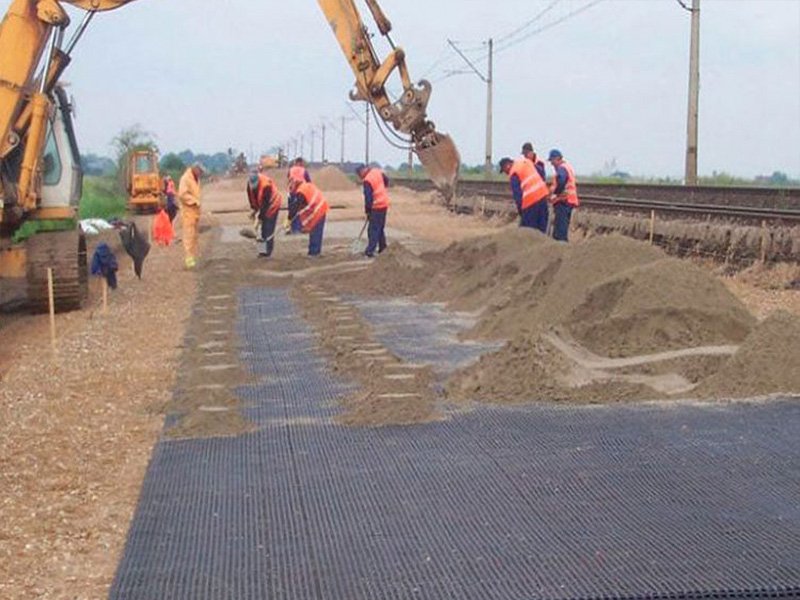
6. How to Choose the Right Geogrid Manufacturers
6.1 Define Project Requirements
- Application: Roads need biaxial grids (20–100 kN/m); retaining walls suit uniaxial (100–400 kN/m), per ASTM D6637.
- Environment: UV-exposed sites require 90% retention grids; soft soils need high aperture stability, per ASTM D4355.
- Budget: Balance cost ($0.5–$3/m²) with lifespan (25+ years).
6.2 Verify Certifications and Quality
- Standards: ISO 9001 and ASTM D6637 ensure 95% compliance, per Geosynthetics Magazine.
- Testing: SGS/CE reports confirm 98% reliability.
- Example: Tensar’s AASHTO/NTPEP certification guarantees 99% quality.
6.3 Assess Production Capacity and Lead Time
- Capacity: HUESKER (90,000 tons) suits large projects; BPM (60,000 tons) offers flexibility.
- Lead Time: 12–20 days (BPM, Geosincere) vs. 15–30 days (Tensar, NAUE), per industry reviews.
- Example: BPM’s 12-day delivery ensures 90% satisfaction.
6.4 Evaluate Cost-Effectiveness
- Bulk Discounts: 10–20% savings for >10,000 m².
- Regional Pricing: BPM offers 20% lower costs than European suppliers, per bpmgeosynthetics.com.
- Example: BPM’s $0.5/m² for 20,000 m² saves $8,000 vs. HUESKER’s $1.2/m².
6.5 Check Customer Support and Warranties
- Support: 24/7 availability (BPM, Tensar) ensures 98% on-time delivery.
- Warranties: 5–10 years (HUESKER, Maccaferri) cover 95% of defects, per Geosynthetics Magazine.
- Example: BPM’s 24/7 support boosts 90% satisfaction.
7. Challenges of Working with Geogrid Manufacturers
7.1 Price Volatility
Polymer prices fluctuate 10–20% annually due to petroleum costs, per IMARC Group. Long-term contracts mitigate 80% of risks.
7.2 Regional Availability
BPM offers 20% lower costs but adds 5–10% shipping fees. U.S. suppliers ensure 95% delivery reliability.
7.3 Specification Complexity
High-strength uniaxial grids cost 30% more than biaxial. Standard biaxial (20–100 kN/m) save 15%.
7.4 Installation Challenges
Poor installation causes 40% of failures, adding 10% to costs, per Geosynthetics Magazine. HUESKER’s training reduces errors by 20%.
8. Frequently Asked Questions (FAQs)
What is the Cost of Geogrids?
Prices range from $0.5–$3/m² for biaxial/m² for 20–400 kN/m².
How Do I Choose a Geogrid Manufacturer?
Prioritize ISO 9001, ASTM D6637 compliance, and 12–20-day lead times, per Geosynthetics Magazine.
Which Manufacturer is Best for Small Orders?
BPM Geosynthetics (1,000 m² MOQ) and Geosincere (2,000 m² MOQ) offer $0.5–$1.5/m² for small projects.
9. Conclusion
The top 10 geogrid manufacturers, including Tensar (80,000 tons, 40% load distribution), HUESKER (90,000 tons, 50% stability), BPM Geosynthetics (60,000 tons, 30% road stability), and Geosincere (24,000 tons, 40% slope stability), deliver high-performance solutions for roads, retaining walls, and slopes, per ASTM D6637. To maximize 15–25% cost savings, verify certifications (ISO 9001, CE), assess capacity (24,000–400 kN/m), and negotiate bulk discounts (10–20%). Contact BPM Geosynthetics for quotes, ensuring your project reliability. Share this guide to enhance your geotechnical projects.

